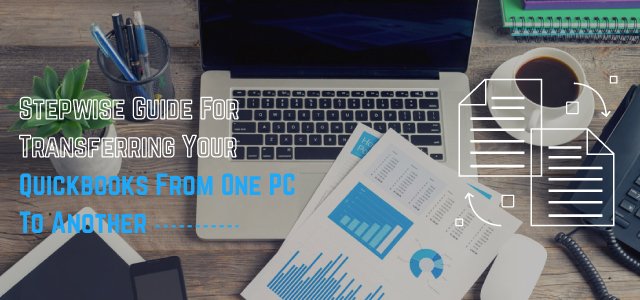Stepwise Guide For Transferring Your Quickbooks From One PC To Another
Moving Quickbooks from one PC to another does not require any special skills or advanced technical knowledge. You will however need to be extra careful to ensure that you don’t lose any critical data in the process. It is always advisable to backup data on a daily basis so that it always easier to revert to the latest copy if required. Also make sure that the Quickbooks version you are planning to transfer will run on the other PC. Remember that newer PCs on latest versions on Windows OS may support only higher versions of Quickbooks. Check for compatibility of operating system and QB versions before attempting the move.
Let’s get on with the step by step instructions to transfer QB to a different PC, be it new or old!
- Create a Quickbooks backup from the PC on which the software is currently active (PC1).
- Copy the backup file from PC1 to PC2 using a portable storage media of your choice. An USB device, external hard disk or CD would do well. Copying the file to an online data store will prove equally useful. Make sure the storage media is supported by the other PC at the receiving end (PC2).
- With a backup file ready for use, it is now time to install Quickbooks on PC2, using the original software CD, or the downloaded installable, and the codes for the installer.
- Once through with the installation, remember to launch the application and update Quickbooks (using Help/Update Quicksbooks) to ensure that the software on PC2 is in sync with that on PC1 (Installed version plus all latest updates).
- Now restore your backup file on PC2. Run Quickbooks. Click on the “Open/Restore an existing company”, followed by “Restore a backup copy”. Select the backup file from where you’ve copied it earlier, and also specify the path/folder for restoring the file to complete the task. You are free to specify a different path from the default location suggested by Quickbooks. Take care never to overwrite your company file. Rename and restore is the best/safest/right option.
- Your company details will get transferred to PC2 once the backup is restored. However, file attachments as well as addition data created using other add-ons will not be transferred.
- You will have to manually restore templates/data files created using add-on such as the Loan Manager (.lmr), Fixed Assets, Cash Flow Projector (.cfp), Financial Statement Designer (FSD clients, FSD data), Spell Checker (Userdictionary.tlx, spell.ini), Business Planner(.bpw) , Quickbooks Letters and Templates, and Printer Settings (QBPrint.qbp, wpr.ini, and PrintEng.ini) to their respective folders.
- Look for a folder named Restored_<YourCompanyName>_Files on PC2. You’ll find it where you restored the backup file. You can copy all the above mentioned missing files to the respective folders here. When in doubt, refer to the Quickbooks folder structure and files on your old system (PC1) to restore the missing files to the right folders on PC2.
- Alternatively you can use Intuit Data Protect (IDP) to restore the backed up file, if you have a subscription. In this case, all data, files and folders, except for few non-Quickbooks files will be restored on PC2.
- Users who are fully confident of their technical prowess can simply copy the entire Quickbooks data folder from PC1 to PC2 after installing the software, without having to backup/restore data.
Note that moving your Quickbooks software to another PC, in no way affects your software license. You can start using Quickbooks from PC2 once the backup is restored and missing files have been moved. Uninstall the software from PC1 only when you’re fully confident that all details have been completely moved to PC2 and are available for further use.

